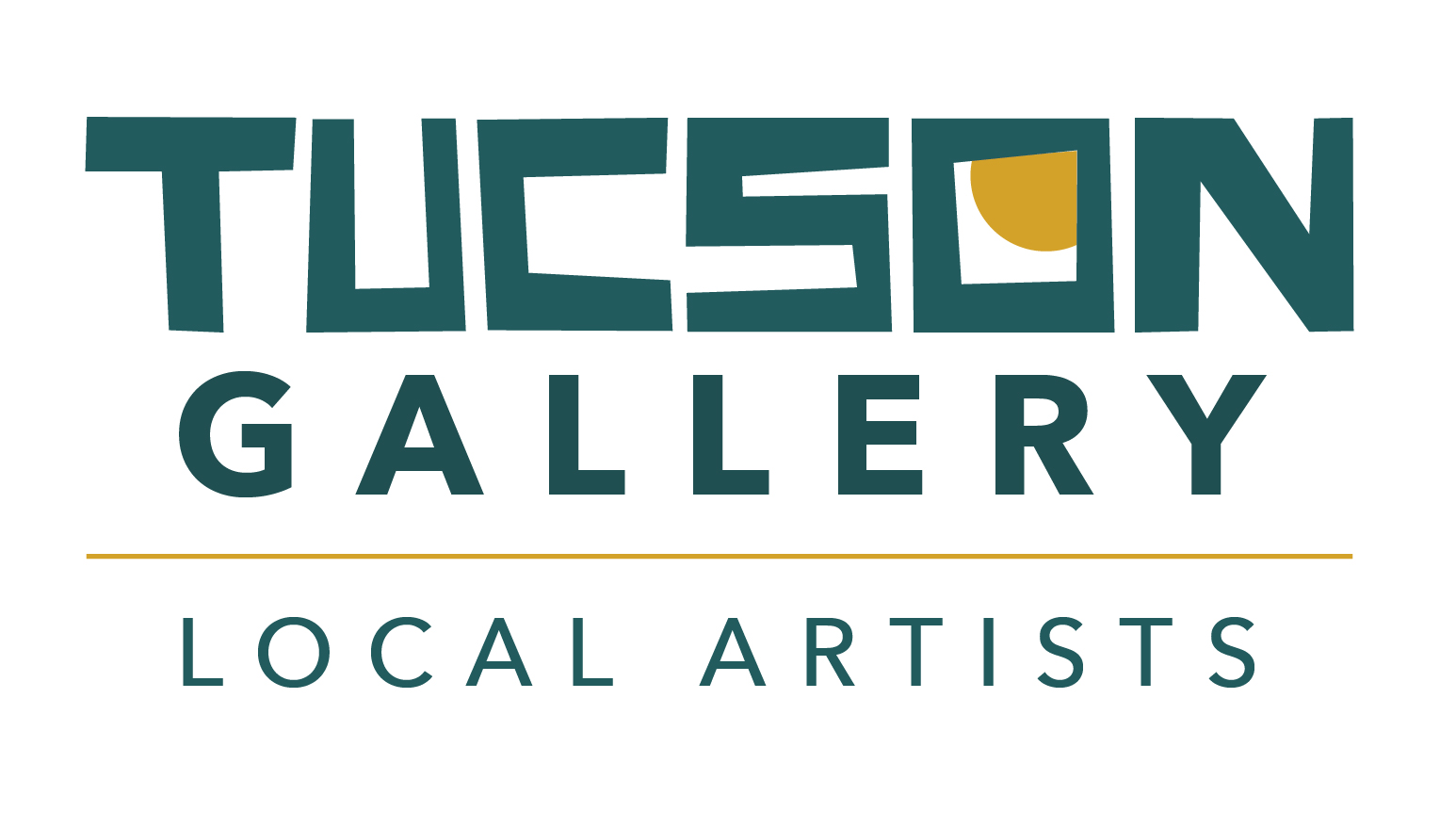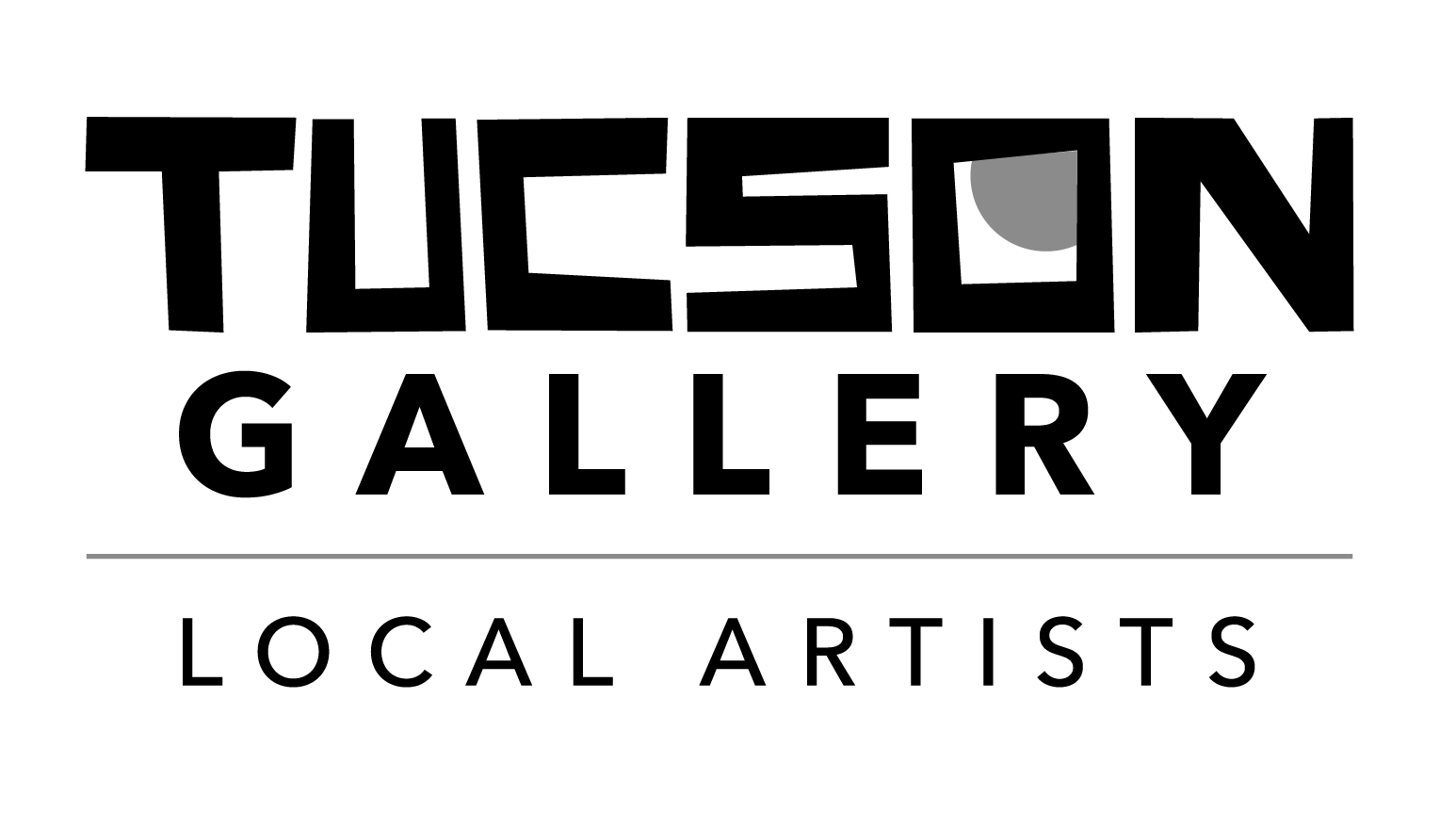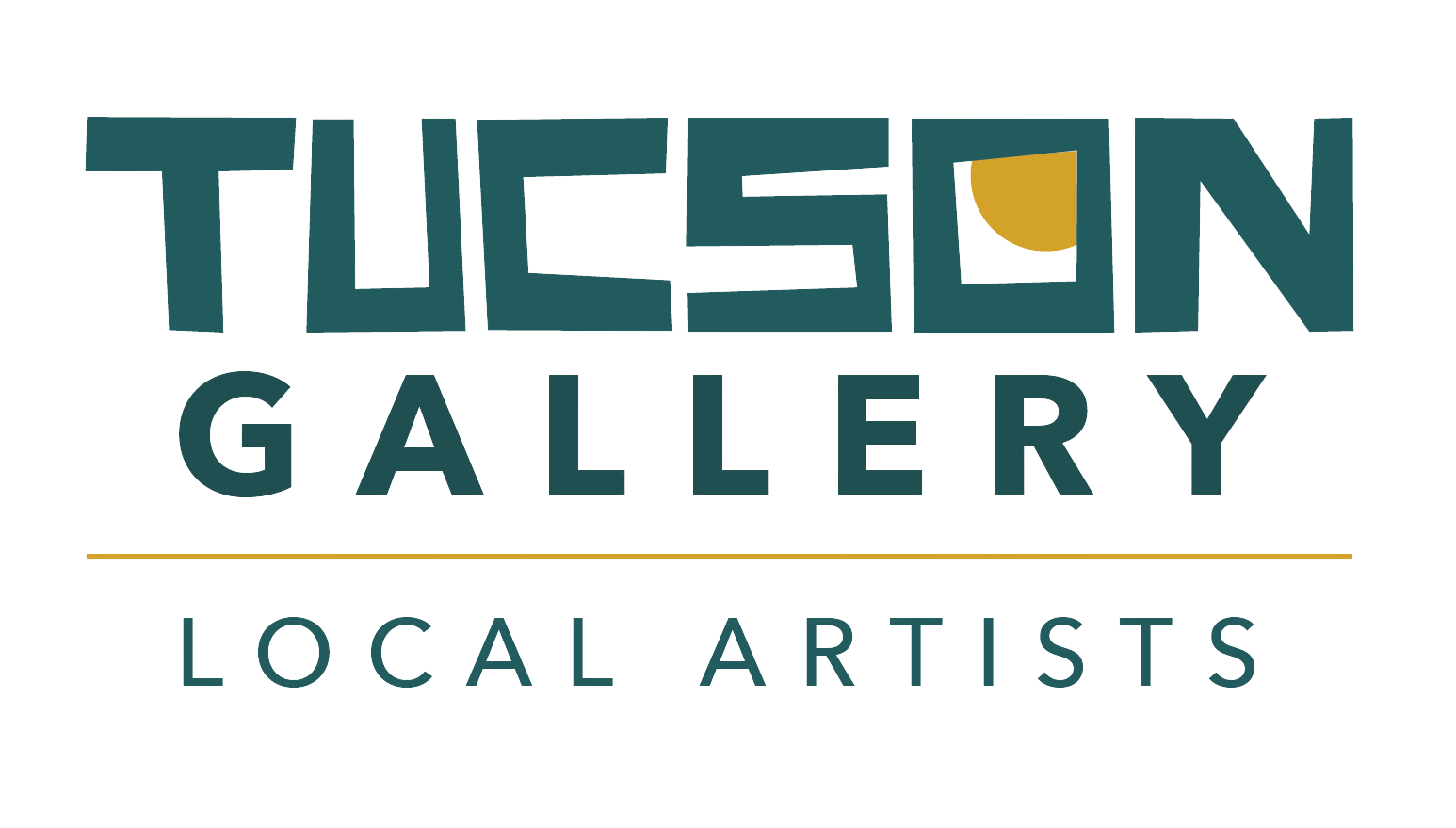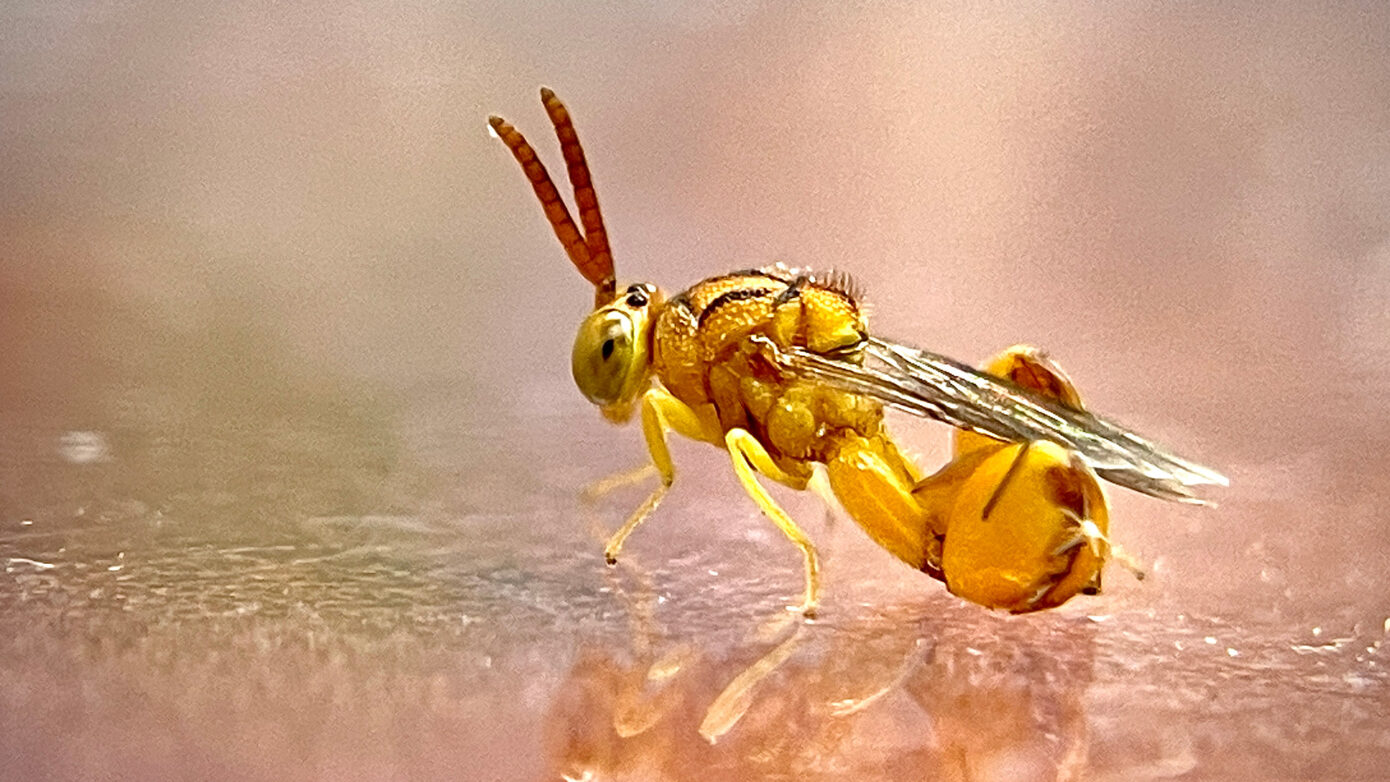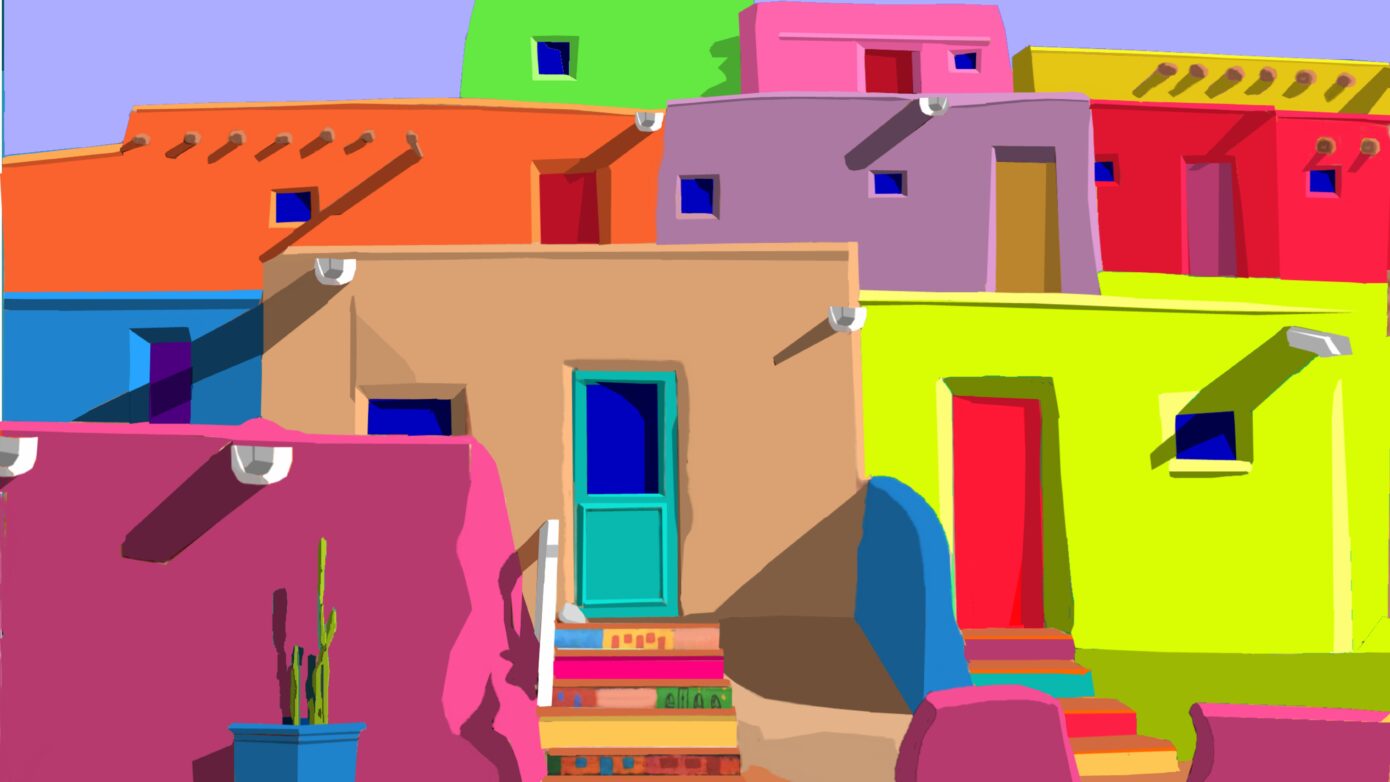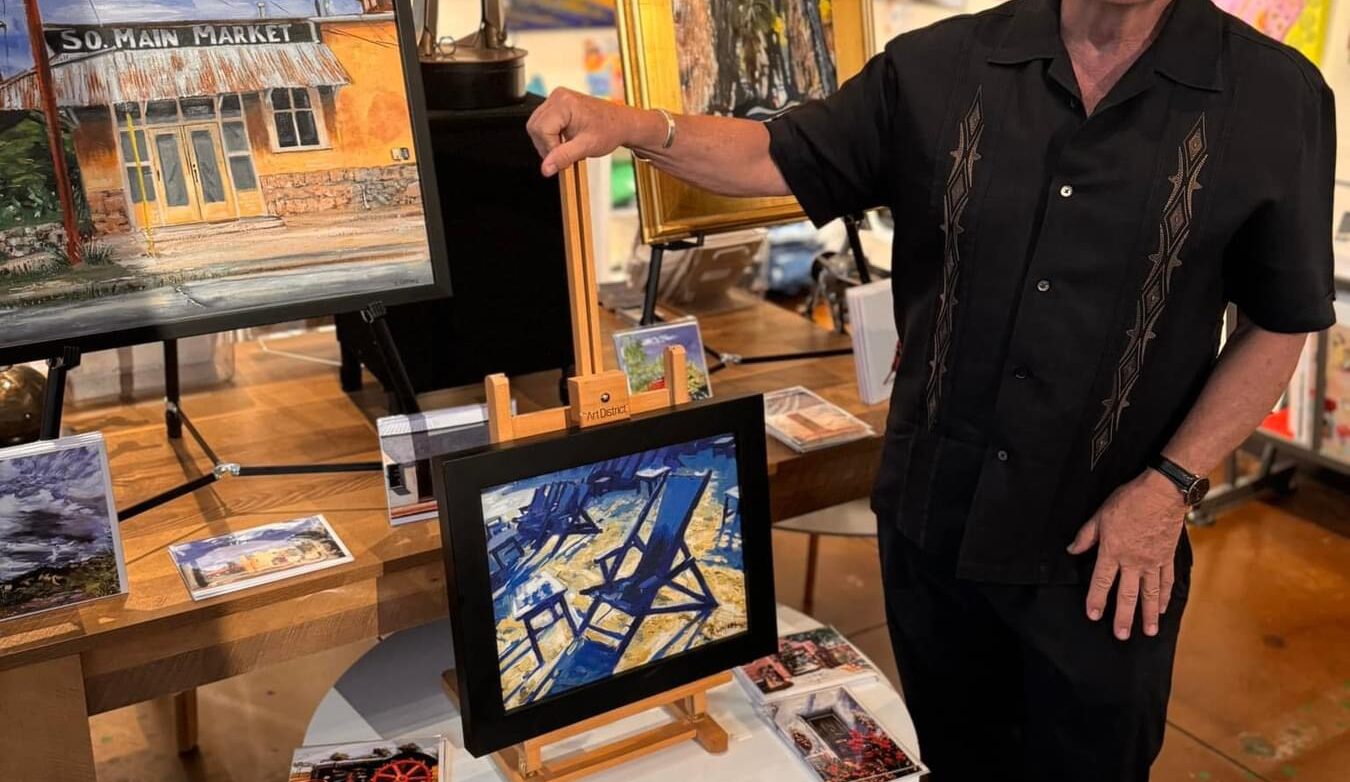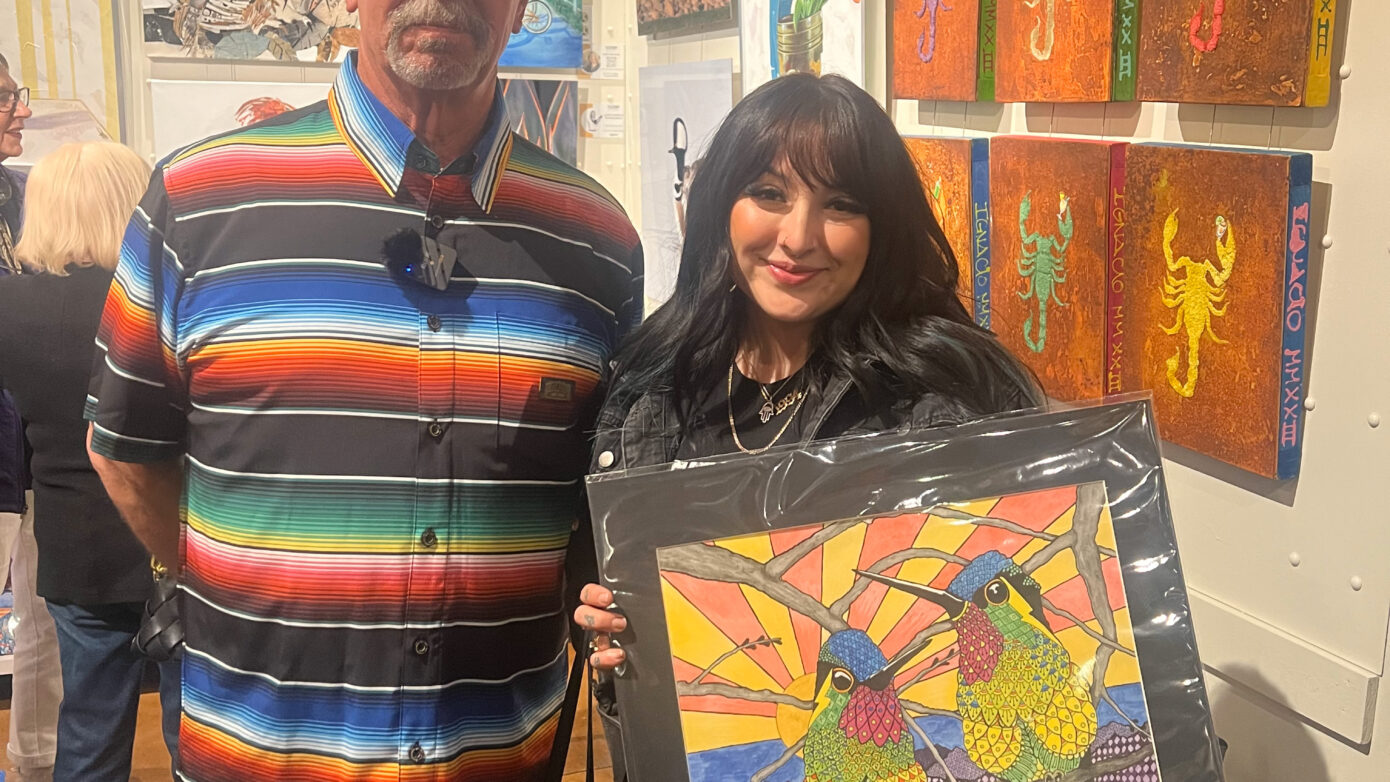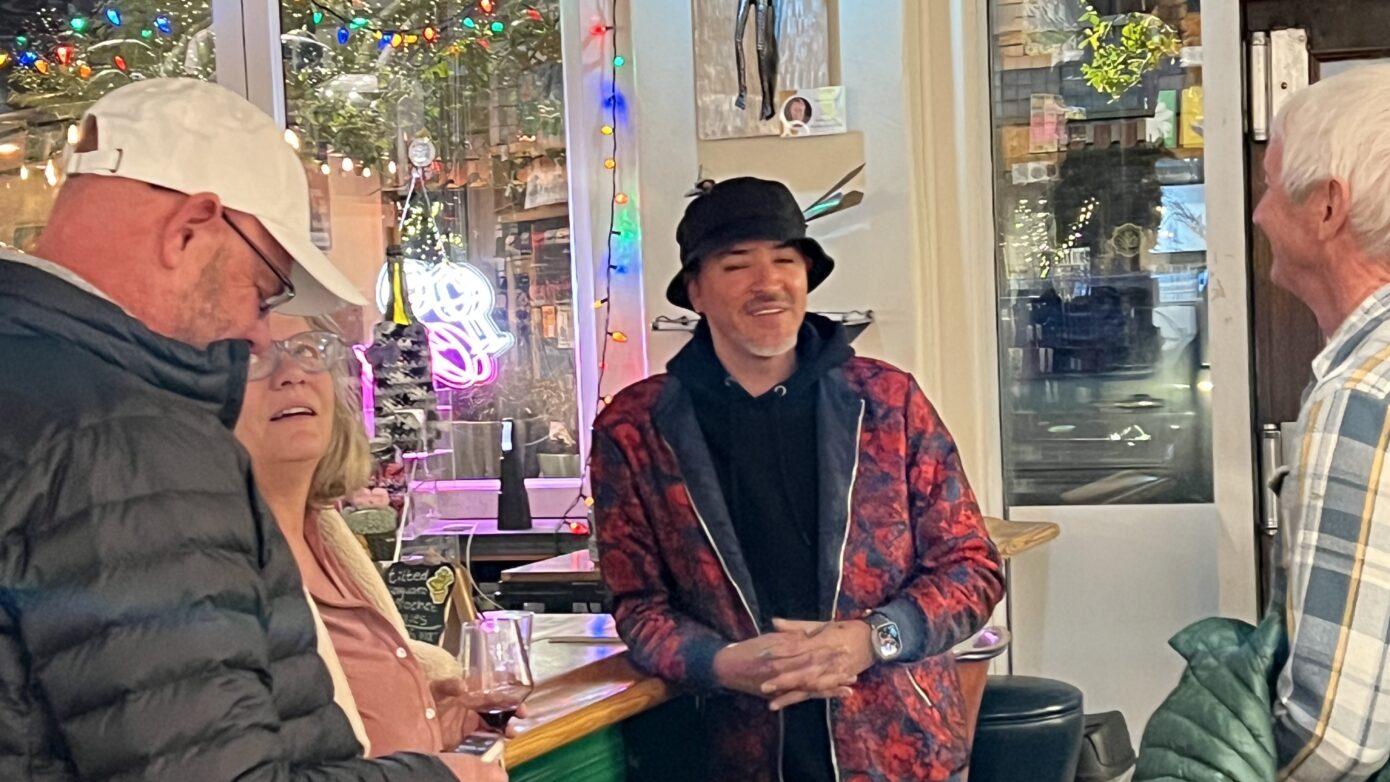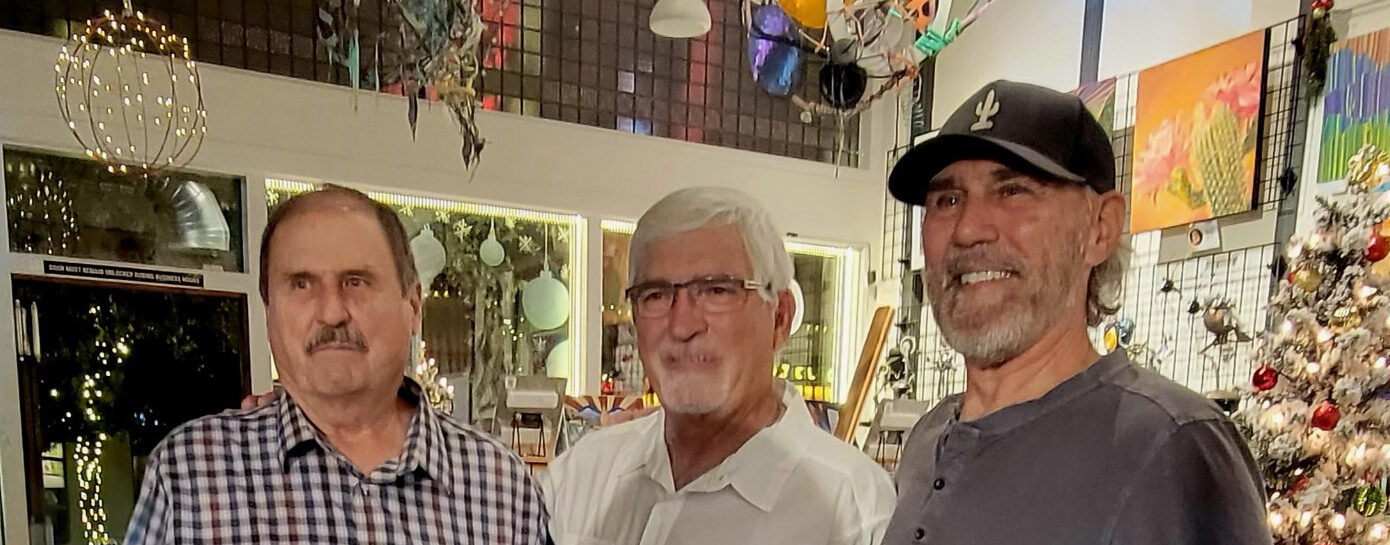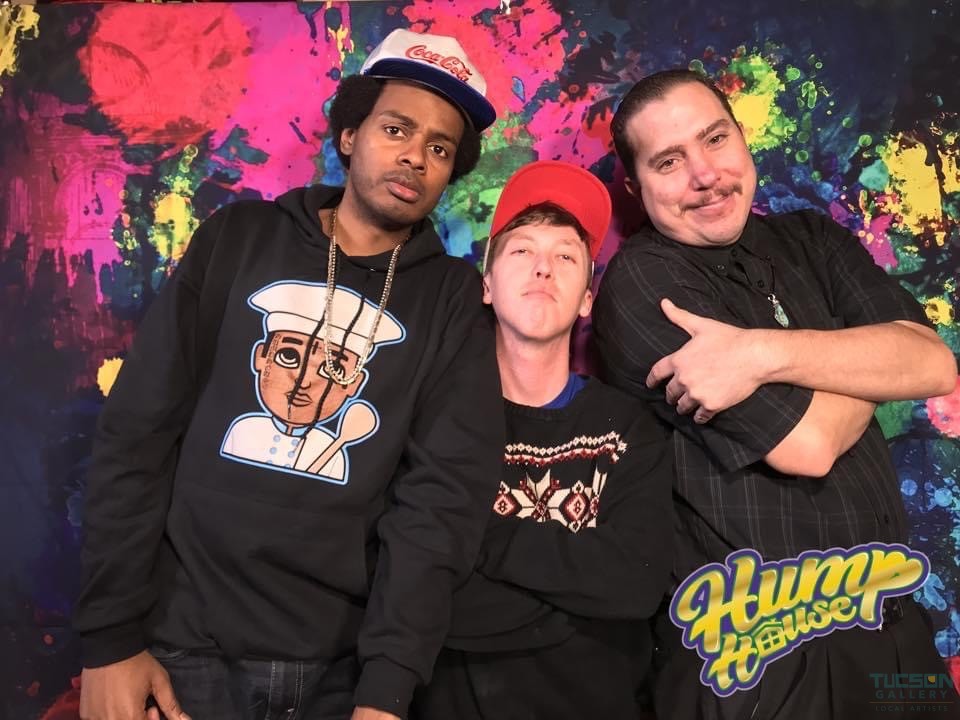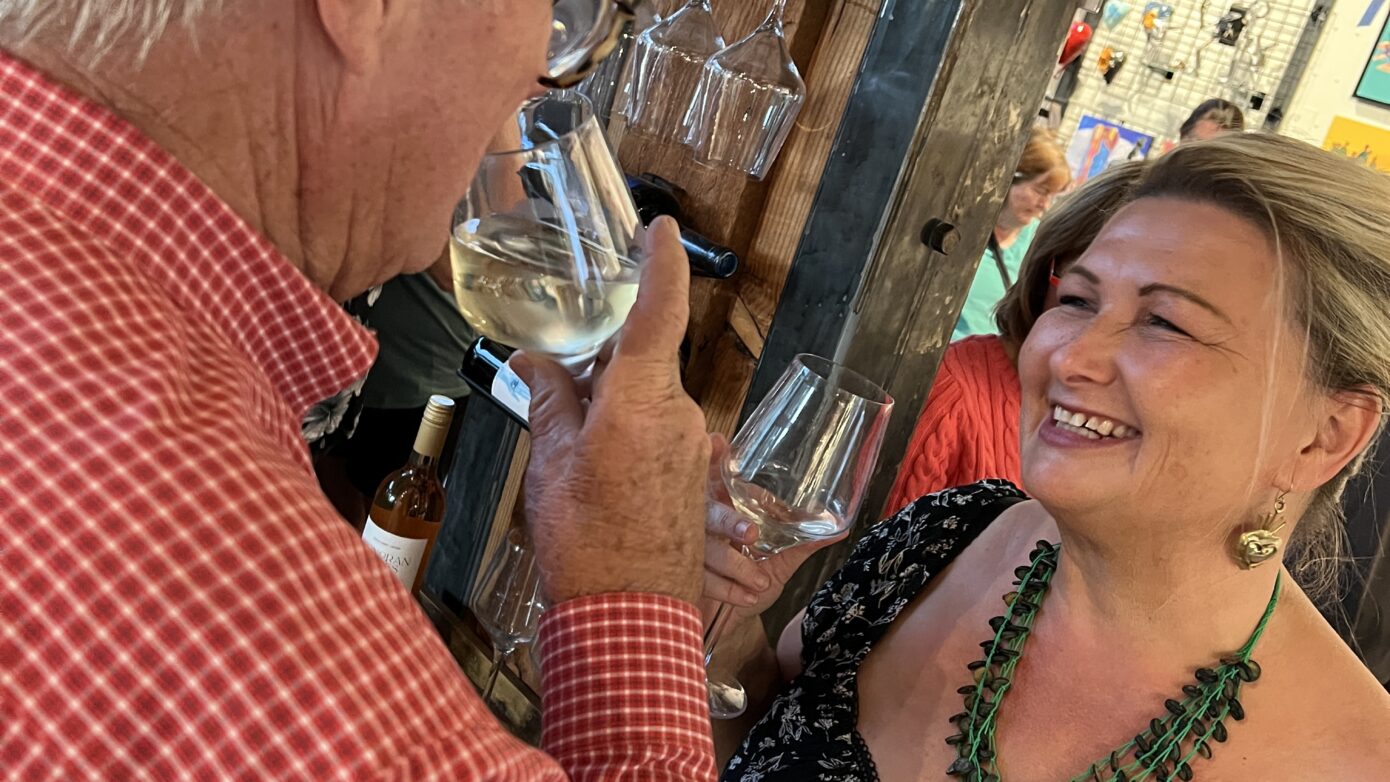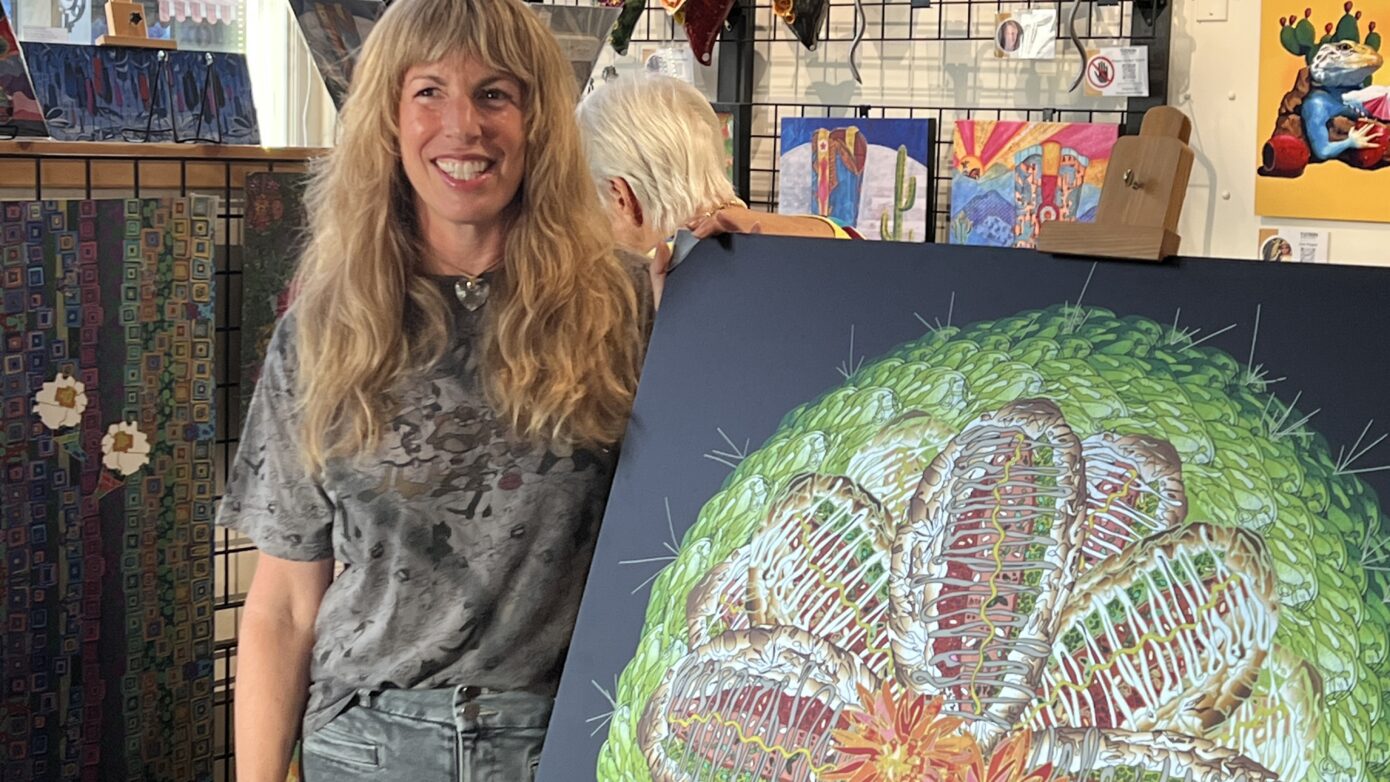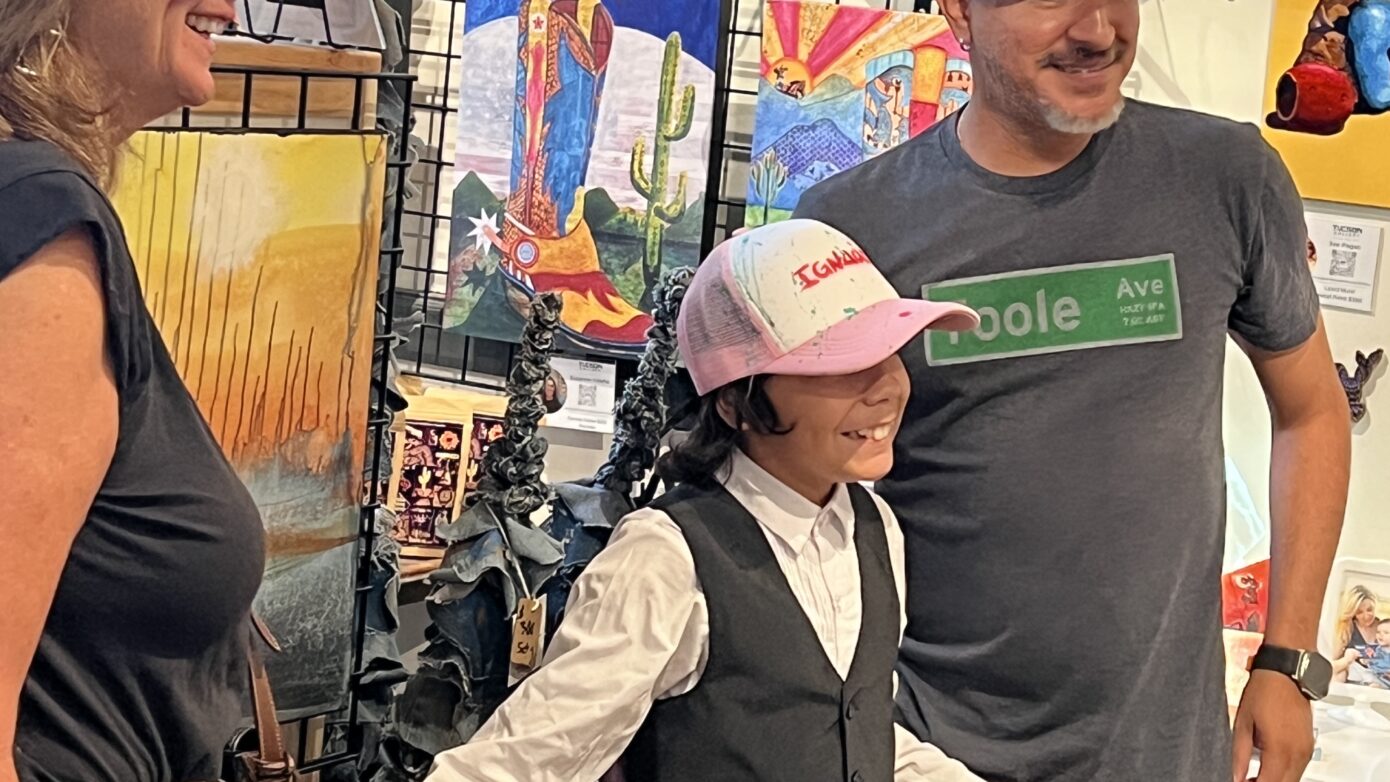Wild Hearts and Painted Dreams: How Courtney Christie Turned Passion into Art
Meet Courtney Christie: Zookeeper, Artist, and Desert Dreamer
At Tucson Gallery, we believe every piece of art carries a story. Few stories are as vibrant and inspiring as that of Courtney Christie. From working with reptiles and insects at the Arizona-Sonora Desert Museum to creating breathtaking paintings and stickers that celebrate the natural world, Courtney’s journey is a testament to following your heart — even when the path isn’t a straight line.
A Journey Fueled by Curiosity and Creativity
Courtney didn’t plan to become an artist. In fact, she first pursued a degree in criminal justice before realizing her true passion lived in the desert’s wild places. Working with reptiles, amphibians, and invertebrates unlocked a deeper connection to nature — and eventually, a spark to share that beauty with the world through art.
Today, Courtney’s work blends scientific accuracy with artistic soul. From detailed portraits of Arizona’s incredible bugs to vivid, dreamlike desert landscapes, her art tells stories of survival, beauty, and wonder.
The Art of Elevating the Overlooked
Through her detailed paintings and her now-iconic stickers, Courtney brings tiny, often misunderstood creatures into the spotlight. Her mission? To show people the beauty of bugs, reptiles, and desert life — and inspire a sense of appreciation for the natural world that surrounds us.
With over 100 active sticker designs and growing collections of fine art pieces, Courtney is just getting started. Her work captures both the complexity and the magic of Southern Arizona’s rich biodiversity.
Watch and Listen: Courtney’s Story in Her Own Words
🎙️ Listen to the full podcast on SoundCloud:
[SoundCloud Player Embed Here]
🎥 Watch the full video interview on YouTube:
[YouTube Embed Here]
Hear directly from Courtney about her artistic journey, the creatures that inspire her, and her dreams for the future!
Explore Courtney’s Artwork
Discover Courtney Christie’s full collection of original paintings, prints, and stickers available at Tucson Gallery. Whether you’re drawn to the intricate patterns of moths and beetles or the sweeping beauty of a Sonoran sunset, there’s a piece of Courtney’s heart waiting for you.
🌵 Stay Connected
Follow us on Instagram and Facebook for artist updates, new releases, and behind-the-scenes looks at our vibrant Tucson art community!
🔔 Don’t forget to subscribe to our YouTube channel and SoundCloud for more interviews and artist spotlights!
Transcript
Tom Heath
Well, welcome back to another exciting episode of Meet the Artist. It’s a product of the Tucson Gallery, which is in downtown Tucson, and Congress Street, across from Hotel Congress. We’re on the corner of Fifth Avenue and Congress right there, and they can’t miss us. We’re inside of the proper shops. Today is our first recording outside. We’ve been doing all the Meet the Artists in there that we try to bring you out remotely to our studio.
Tom Heath
And today we are with the fabulous Courtney Christy, welcome to Meet the Artist.
Courtney Christie
Thank you.
Tom Heath
I was trying to think like it’s sometimes it’s just, you know, our our our artists, but you’re like, zookeeper, animal tamer or snake charmer. You wrestle alligators, too.
Courtney Christie
Is that sometimes? Yeah.
Tom Heath
Well. And what, what role? Like, where do you do all of that stuff?
Courtney Christie
All the animal stuff.
Tom Heath
Yeah. Like, where do you. Where do you. I’ve seen pictures of you holding, like, really big snakes.
Courtney Christie
Oh, yeah. So I’m a zookeeper at the Arizona Sonora Desert Museum. I’m, one of the reptile keepers, so I work with reptiles, amphibians, invertebrates. Saw the.
Tom Heath
Birds. So you have wrestled an alligator?
Courtney Christie
I’ve never worked with alligators, but very large snakes.
Tom Heath
Very large snakes? Yeah. On the Tucson Galleries website, there’s your profile, and it’s got the picture. And the snake is as tall as you are.
Courtney Christie
I’m not even remembering what picture that I was.
Tom Heath
I just had the snakes all the time. So it’s like I’m thinking it’s this big deal. You’re like, that was just a Tuesday, I don’t know.
Courtney Christie
Yeah, an everyday thing, but it’s really fun.
Tom Heath
Yeah. So it was, it was. This was zoo keeping. Was that your passion? Is that what you’ve thought about you’re going to be doing or did you. How do you get into zoo keeping?
Courtney Christie
It’s kind of it honestly wasn’t really planned. I, oh, it’s. Yeah, I graduated college. The first time with an unrelated degree was not really a plan for what to do. Once I had the degree.
Tom Heath
Perfect. That’s what college is for.
Courtney Christie
Yeah, criminal justice was my first degree.
Tom Heath
Okay.
Courtney Christie
And then after a year of not doing anything with my degree, I decided I wanted to go back to school because I wanted to do something with animals. I didn’t want to be a vet, but I didn’t really know what else there was. So I just figured I would figure it out along the way. And,
Courtney Christie
Yeah. Towards the end of that second stint at the university, I, ended up doing an internship at the Desert Museum. And yeah, the timing worked out, the stars aligned. I got really fortunate with how everything worked out. And, ended up with a job like a year later, a year after my internship. And I’ve been there ever since, so it’s been about eight years.
Tom Heath
Wow.
Courtney Christie
Yeah.
Tom Heath
So how does that work? You go to school, you graduate, you get a degree. Did you did you went back to school. So, like, how does that, like, what does that mean going back to you if you don’t start over but you take just a different class?
Courtney Christie
Yeah. I basically had to kind of start over. So I did the full four years the first time, on a scholarship. And then when I went back, I had to just pay out of pocket. So I started a PMA and then went back to you. Okay. So it was actually five more years. So my entire 20s, I was just in college and then, five more years.
Tom Heath
So yeah.
Courtney Christie
Because I was working full time also so I can go to school completely full time. Gotcha. But yeah. So I got an ecology evolutionary biology degree and then, yeah, I ended up at the Desert Museum. Is is your keeper. And I always thought I would do field work afterwards. But then I started having, like, back issues, so I can’t seem to be mindful of the things I’m going to do with long terms, and.
Courtney Christie
Yeah.
Tom Heath
So, so that how does this, that what point did this artistic bug I say bug as a pun because we’re of work there bugs, but not all of your work. But you have a quite a collection. When did you start getting involved with with art? I mean, was this just passing time when your nine years of college?
Courtney Christie
No. Ironically, I didn’t do any art during college, but, when I’ve always done art, like, since I was a little, just like from book reports to just random drawings like that. And then during college, I just didn’t really have time for, personal hobbies. And then when I graduated, I was like, I feel like painting.
Courtney Christie
So I went to Michaels for my first time and bought some paint supplies. Oh my gosh. I was like a 20 something year old and just started painting and, and then I went back to college. So it got paused again for another 4 or 5 years.
Tom Heath
Since we picked up some canvas and supplies. And what, what what your first painting was.
Courtney Christie
One of my first. It was like this really abstract, super colorful cityscape with, like, crazy colors, kind of, I guess, winding through the city. Okay. Yeah, just very abstract, the experimental and stuff. But, yeah, it was fun. I really liked it. And then once I around the time I became a zookeeper, actually, I was like, I’m going to start doing art again.
Courtney Christie
And then it wasn’t until last year that I decided I actually want to try and do this full time, and I’m not there yet, but I’m making plans to hopefully make that happen. Okay. Yeah.
Tom Heath
And you know, you’re in. I think people should probably go to the website to sign gallery.com to see the different styles of work because you’ve got, color is definitely a part of your palette, but you have a couple of very different kind of approaches to art, or some is very, very accurate portrayals of animals and bugs, and others are beautiful landscapes with very vivid sunsets and, and things of that.
Tom Heath
But that like the, the, the, the, the, the, the bugs and the creatures and the critters and the butterflies. Is that coming from the the background of a zoo keeping evolutionary biology, or is that something that you were doing? And it just sort of happened to be a coincidence?
Courtney Christie
Yes.
Tom Heath
Okay. This interview is over. It’s for that question.
Courtney Christie
Yeah. So. Well, I’ve always liked bugs, since I was very, very small. And, my first bug encounter that I’ve been told from my mom is walked up to her with my hands closed and, wanted to introduce her to my friend Fred. And it was a black widow that was three years old. And she was like, all right, put that down.
Courtney Christie
I don’t pick up Black Widows now, but I’ve always liked spiders in particular. And then, I’ve always liked bugs, but never really had pursued it and didn’t really know any other people. I liked bugs, until I worked at the Desert Museum. And then I’ve met a couple of really, really awesome people who are entomologists and made a few mentors, or got a few mentors.
Courtney Christie
And I just learned a ton during the first two years working at the museum. And, yeah, I didn’t know, like, scientific names or half. I didn’t know any of the things we had, besides very basic things like that’s a beetle and that’s a black spider, and that’s a brown spider. But yeah. So I learned a lot just through my job and the people I met through there.
Courtney Christie
And, and then the art part came along later when a friend of mine encouraged me to. I had painted a beetle and for, like, an auction thing, and, And he was like, you should turn that into a sticker. And I was like, I don’t know anything about stickers. Plus, I want to do fine art. So, like, I want to paint like giant cats, like big cats and stuff.
Courtney Christie
Because originally I wanted to go work with big cats. And, and he was like, oh, a lot of people will like that. It’s a really, really special beetle we have in southern Arizona. The glorious scarab beetle and I was like, all right, I’ll turn it into a sticker or whatever. But my main goal was to do, like, painting, like acrylic on canvas.
Courtney Christie
And I was like, this is just going to be a little side project. And that was five years ago, and that’s become my main project, which is still I’m hoping to make that my side project. But, yeah, from that beetle. And basically since then I’ve drawn over like 200.
Tom Heath
Different ads going to ask me. Yes. Any that you have.
Courtney Christie
Yeah, I have over 100 active sticker designs. And then I just last year started branching out into, like, prints and greeting cards and things, because I wanted to kind of steer back into, like, I want to make the leap to painting and then have, like, my sticker business sort of self-sustaining for a while or just a little less, energy putting into it.
Courtney Christie
Because painting is very time consuming.
Tom Heath
But, I mean, I don’t remember getting back to pay. You are a painter. You’ve got several. We’ve got a few originals in the gallery. Just so a couple, the it that is, it’s a different feel on the on the canvas. Then. Then the stickers. The stickers are very much like. Sometimes they look like photographs of of the the image of the images, but they’re hand drawings.
Tom Heath
And then the, the canvas just there’s always not always a lot of times there’s, there’s sunsets or sunrises. There’s, that sun sort of blasting through the, the image on the canvas.
Courtney Christie
Yeah. It’s, I think a challenge for a lot of artists is trying to find a focus because the fun is in the creating, and it’s just so easy to have, like, so many different outlets and interests. And I think some artists really do hone down on, like, a specific subject, subject matter or style or something like that.
Courtney Christie
And so some of us are just always in this experimental phase, and I love doing the bugs. Like so, as with my zoo keeping and the bugs and the reptiles I love, the bugs especially. So many people are afraid of bugs or just don’t know anything about them. And same for snakes. And the thing I love about my job is there’s a little bit of an education component, and we do programs and get to talk about like I did today, and we get to show people these aren’t scary animals, they’re not out to get you.
Courtney Christie
They don’t want to hurt you. You get to educate them mostly about venomous, like snakes and lizards, but bugs too. You know, they’re we need them to live on planet Earth, and and people don’t know much about them. They’re so tiny that a lot of people don’t get to appreciate the intricacies. Like, they’re really cool abilities.
Courtney Christie
Their colors, their shapes. They’re just. They’re little, tiny robots. They’re very, very complex. And people have no idea because they’re so tiny. And, actually, on my camera roll right now, I have about that, an almost 70 photos of a tiny wasp I found this morning. It’s called a child city wasp. And they have very thick thighs.
Courtney Christie
Like they never skip leg day. And, I’ll show you afterwards, but the the people, like, when I saw it just flying in the air, it was just this little, like, yellow thing fluttering around, and I didn’t recognize the flight pattern. I was like, what is that? So I thought then I caught it in a vial and looked up close and I was like, oh, it’s so cool.
Courtney Christie
Well, we’ve seen a few of these, not this species, but point of that being, it’s so tiny it would be easy to overlook. And what past? And through my art and my paintings and, some of my earlier paintings, I started doing these, like jumbo bugs for, a work event we have called insect topia. And just to, like, hang them up for decoration, I.
Tom Heath
Was trying bugs. Yeah, they’re a lot of fun.
Courtney Christie
And the point of those is to to blow up all of these intricate, complex, beautiful details of these tiny, scary creatures to show people how cool they are. Because they’re really awesome. I mean, people don’t get to see them in that context up close. So I figured, like through art and painting, you can kind of create more of an appreciation, you know, because there are size, like, I mean, I did a six foot centipede.
Courtney Christie
Yeah, a couple of years ago. That fits in the door frame. And, maybe that’s not a great example of something to make people like bugs can centipede, you know, kind of an actual, like, creepy crawly, but, yeah, bugs are so cool. And reptiles too.
Tom Heath
But just looking at the intricacies of your drawings and, and, you know, butterflies and moths that I did not know. There is much of a difference between the two. Until I started, because one of my jobs at the gallery is to catalog everything and get it into the inventory. And so when you bring in your stuff, it’s like a whole lesson for me.
Tom Heath
I’m trying to learn because you bring in the light and it’s luckily you give me like it’s the one with the blue and red on the wing so I can track it down. But I’m looking at these two and, and so sometimes I have to like look them up online to figure out which exactly one is it. And I’m just amazed at the, the symmetry and similar and similarities between them, but also even in that case, once you really start to look at it, they’re so different, they might look the same and in one respect, but then as soon as you kind of dive into it, the patterns are different or the the placement
Tom Heath
of the colors of the circles, you know, they’re all obviously they’re all independent and unique, but, I don’t know.
Courtney Christie
There’s yeah, there’s so much diversity and in not just insects and vertebrates and I mean just laps alone, which are moths and butterflies, there’s I think 800,000 species. And of those.
Tom Heath
It’s like, add some more stickers to make.
Courtney Christie
I want to say there’s like 90% of those are actually moths. And like a very small fraction is butterflies. But moths are mostly nocturnal. So we don’t see them as often and, and. Yeah. And something else that has been one of my goals with my bug art is, to kind of make more niche things that are hard if like that aren’t found anywhere else, like there’s so many bugs, you know, and you’re not going to find certain things anywhere.
Courtney Christie
So when people are getting weird requests, like, I love making those and, yeah, I want to make the things that you can’t find anywhere else just to support the people that are studying and.
Tom Heath
And what you’re producing and your stickers, those are those, like Arizona, those regionally specific. Or do you because I, you just you came across you like traveled to Australia recently. To study bugs.
Courtney Christie
That was just like a for fun her bank trip to find reptiles and. Okay. Yeah it was a little early and they’re like equivalent of monsoon. So the bug activity wasn’t amazing. Was pretty cool though. There was some cool bugs, and a lot of really cool reptiles. But, most of the art I do is local, or at least southern Arizona.
Courtney Christie
Sonoran desert based, I’d say like, like 80 to 90% is local. Because, yeah, the Sonoran Desert is a hot spot. We’re right next to the border, Mexico. A lot of stuff comes up, the habitats are quite the different. Plus we have all the sky islands. So we have so much diversity and even just reptiles. We have over 50 lizard species just in Arizona.
Courtney Christie
We have over 50 snake species just in Arizona. And, yeah, a lot of people come here, I think behind Florida, we’re like the second, maybe the third most biodiverse place in the US. Wow. And we have tons of plants, and.
Tom Heath
Specifically like southern Arizona.
Courtney Christie
I mean, yeah, the southern part is more, but all of Arizona. But yeah, especially our, our region, we just have so many really cool invertebrates, so many cool reptiles. And this is where people come to to find reptiles, too. It’s a really cool spot. Mere home of the Gila monster.
Tom Heath
Yeah.
Courtney Christie
Which, yeah. Awesome lizards and, yeah, we’re really lucky. We have a lot, a lot of diversity here.
Tom Heath
We also have a lot of swirls. And there’s one there’s like you have a favorite soil. Don’t you like the hottest.
Courtney Christie
Yeah.
Tom Heath
Couple of years. It’s got a few arms coming.
Courtney Christie
Yeah. So that soil is right outside the building at my work. Okay. So every morning when I drive in, I get a nice sunrise, and then I, like, get that in the foreground. And I actually turned one of my paintings into a sticker, which is something I said I wasn’t going to do, at least for my animal paintings.
Courtney Christie
But my best friend encouraged to do this while getting into a sticker or something. Yeah, yeah, and it’s a really cool little holographic sticker. But every time I finish a sticker, one of my goals is to take it full circle and get it like, get a picture of the sticker next to the real thing. So for the bugs and the reptiles and stuff, I have to, like, wait till the season comes around again and do that.
Courtney Christie
But for this one, I was really excited to do this. Get a picture of that, sunset next to the real thing. And I was thinking of this. The next day at work that I was going to do it. There had been like crazy rain and wind the night before, and one of the arms broke off.
Tom Heath
Oh no.
Courtney Christie
So now it’s not the same sorrow. It just has two arms instead of three. Or like the day, the day I was going to do it. Yeah, that’s the world, you know, it’s probably 80 years old or something.
Tom Heath
I was going to say you captured it at the exact right moment, and it’s, that lives in perpetuity. Through the reproductions and the stickers, the original has sold. So it’s true. It’s no longer in the gallery, but, the stickers are really fun, and, we we I think we sell a lot of those. The holographic nature of them catches the eye.
Tom Heath
The way the light, shines off of you. But in some of your artwork, it’s sort of like a combination. So you got some acrylic work of, like, an owl and a jaguar, I believe. And when we have those in the gallery, people thinking at first glance, their photographs like these are intricate.
Courtney Christie
Tom Heath
How long? Like how long? How long does something like that takes?
Courtney Christie
Very long time.
Tom Heath
Okay, good, good.
Courtney Christie
Yeah. And that’s why, like, my painting has sort of been on pause for now. I wouldn’t say continuously for years, but I do painting projects like here and there, and then I don’t touch it for like 4 or 5 months because there’s so time consuming. So it’s like a sticker project drawing from drawing to coloring to, like, sticker.
Courtney Christie
It’s like less than ten hours for the whole process. Most of the drawing part is like maybe about five, six hours. For those paintings, like my unamused, my great horned owl, that took somewhere around like 60 to 70 hours. And then my jaguar, which is muse, that one took, almost 100 hours. And I would like log my hours and say, like what I was working on just for my curiosity.
Courtney Christie
But yeah, those take a really long time. And I’m. I’m still learning, like, these are experimental. I’m trying to learn techniques and, I have some artists that really inspire me. There’s a Nick Snyder. He does tigers and lions mostly. He does other stuff too, but he’s like phenomenal. And they’re large scale, like, not quite as big as the wall, but they’re pretty big.
Courtney Christie
And I wanted to start doing really large. So each painting I do, I’m getting slightly bigger, and then.
Tom Heath
Run out of room because you got some bigger ones already. Yeah.
Courtney Christie
Another artist, Carla Grace. She’s. She lives in Australia. She’s actually South African, and she does a lot of mammals, but she also does really, really detailed, mostly mammals, but she does all kinds of, like, she does occasional birds and sometimes reptiles, but mostly mammals. And she is just phenomenal. Those two are like my biggest inspirations. And that’s if you look them up, you can see that’s what I where I’m trying to go is like learning techniques and stuff is just that, that level.
Courtney Christie
There’s so talented and.
Tom Heath
Well, I don’t think you’re you’re too far behind. I know there are people in the gallery that they will come in and they will look at your work and they’ll study your work, and I, I don’t think it’s going to be very long before people are reaching out to you as their inspiration, because you’re it’s it’s beautiful. It’s technically correct, but it’s, it’s also you’ve captured not just the, the, the realism of the animal.
Tom Heath
You’ve captured the beauty of it, and the insects in the moths and the butterflies, you’ve put them in positions and places in ways that they’re just. So this is extremely, flattering for them as well.
Courtney Christie
Thank you. Yeah. That’s right.
Tom Heath
I think that’s Courtney Christy can check out more on our website. Tucson gallery.com. A lot of the pieces that we talked about. So our sun, muse, unamused, which kind of funny those are together.
Courtney Christie
That was intentional.
Tom Heath
Yeah, it was that. No, but those were the reproductions are available, and we still have, unamused, the Great Hornet, the, we still have, in the gallery, the stickers, though I think that’s more they’ve got to come in to see those and we don’t really have we’ve got some reproductions online, but not stickers.
Tom Heath
I think those are something you need to come in to really check out. If you get your collection, even if you’re.
Courtney Christie
Some of my.
Tom Heath
That’s perfect. Yeah. If you’re listening in the world.
Courtney Christie
That’s my.
Tom Heath
Paintings. Radio. She’s holding up her sticker holder, which also looks like a water bottle or something, but I love her.
Courtney Christie
Not that one.
Tom Heath
Of her critters.
Courtney Christie
Oh, my. Bugs. Yeah.
Tom Heath
Yes. Bugs and snakes. And then the Sahara sun. And so I really appreciate your time today.
Courtney Christie
Yeah. Thanks for having me. Thank you.
